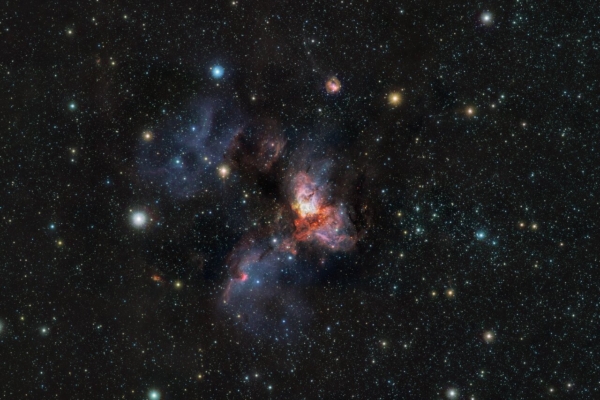The European Southern Observatory (ESO) recently released a high-resolution image of a young star cluster. This image, presented with 80 million pixels, showcases the scene of numerous stars being born within the cluster in a very vibrant display.
According to the ESO website, astronomers used the Visible and Infrared Survey Telescope for Astronomy (VISTA) located at the observatory in Chile to capture this cluster named RCW 38.
RCW 38 is located in the Vela constellation, approximately 5,500 light-years away from Earth. It is an active star-forming region, experiencing a burst of star formation activities.
From the ESO image, one can observe bright stripes and swirls within the cluster, as well as vivid pink gas clouds and colorful spots, which represent the young stars.
Our sun is roughly 4.6 billion years old and is in a stable phase of its life. In contrast, the stars within RCW 38 are very young. The cluster contains around 2,000 stars, all under the age of 1 million years, creating the enchanting scenery visible in the image.
This young star cluster is filled with vibrant star-forming activities, making it an intriguing target for astronomers to observe.
The cluster acts like a giant pressure cooker, containing all the elements necessary for star formation – dense gas clouds and opaque dust clumps. When this mixture of gas and dust collapses under its own gravity, stars are born.
The intense radiation from these newborn stars illuminates the surrounding gas, creating the spectacular pink hues we see in the RCW 38 image.
However, many of the stars in RCW 38 remain hidden in visible light to us due to dust blocking our view. The VISTA telescope’s VIRCAM camera can observe nearly unimpeded by dust in the infrared light, revealing the true nature of the cluster and allowing us to see young stars within the dust, including brown dwarfs, often referred to as “failed” stars.
Following the capture of this image, the VIRCAM camera has been retired. Since its launch in 2008, the camera has carried out multiple imaging surveys.
Later this year, the VISTA telescope will receive a new instrument called 4MOST, heralding a new chapter for the telescope and promising a bright future ahead.

